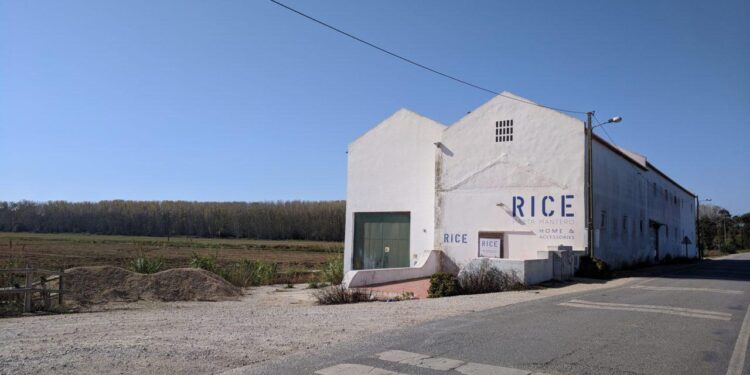The Rice Museum, a striking new addition to rural architectural heritage, has opened its doors with a design that seamlessly intertwines local memory and ecological consciousness. Featured on ArchDaily, this innovative project showcases how architecture can honor agricultural traditions while embracing sustainable practices. Situated amidst lush rice paddies, the museum not only preserves the cultural significance of rice cultivation but also exemplifies a commitment to environmentally responsible construction, setting a new standard for rural museums worldwide.
Rice Museum Showcases Architectural Design Inspired by Rural Traditions and Natural Environment
The newly unveiled Rice Museum represents a bold architectural dialogue between heritage and sustainability. Drawing directly from traditional rural construction techniques, the design incorporates natural materials such as timber and locally sourced stone, harmonizing seamlessly with the surrounding landscape. The museum’s layout mimics the organic patterns of rice paddies, utilizing terraced levels and flowing pathways that encourage visitors to engage with the space much like farmers interact with their fields.
Key architectural features include:
- Sloping green roofs that absorb rainwater and reduce heat
- Open-air pavilions inspired by vernacular farmhouses
- Use of natural ventilation techniques to minimize energy consumption
- Material palette reflecting the earthy tones of rural terrain
| Element | Traditional Influence | Eco Benefit |
|---|---|---|
| Terraced Floors | Rice paddy layout | Rainwater management |
| Timber Columns | Farmhouse beams | Renewable resource use |
| Green Roofs | Thatched roofing inspiration | Thermal insulation |
Exploring Sustainable Building Techniques that Honor Agricultural Heritage
The Rice Museum stands as a testament to innovative architectural solutions that seamlessly blend sustainable building practices with the deep-rooted cultural identity of rural communities. Utilizing locally sourced materials such as bamboo, rammed earth, and reclaimed wood, the design champions environmental responsibility while echoing the agricultural traditions of rice cultivation. This approach not only minimizes the carbon footprint but also fosters a tactile connection to the land, embodying a philosophy that respects both ecological balance and ancestral wisdom. Natural ventilation and strategically oriented open spaces optimize passive cooling, reducing energy consumption and enhancing visitor comfort in a climate-sensitive manner.
The museum’s construction embodies key principles that highlight its mission:
- Adaptive reuse: Salvaging materials from old farm structures to preserve history and reduce waste.
- Community engagement: Collaborating with local artisans to incorporate traditional craftsmanship.
- Water management: Implementing rainwater harvesting systems inspired by rice paddy irrigation techniques.
- Landscape integration: Designing green roofs and terraces that mimic the terraced rice fields, promoting biodiversity.
| Technique | Benefit | Agricultural Inspiration |
|---|---|---|
| Bamboo Framework | Rapid renewability and high strength | Rice stalks’ flexibility and resilience |
| Rammed Earth Walls | Thermal regulation and natural insulation | Clay-based terraces retaining moisture |
| Rainwater Harvesting | Efficient water use and conservation | Traditional rice paddy irrigation channels |
Experts Recommend Integrating Local Ecological Elements for Community-Centered Museum Spaces
Leading voices in architecture and cultural preservation emphasize the importance of embedding local ecological characteristics into museum designs to foster a stronger sense of place and community identity. Incorporating native flora, traditional building materials, and landscape features not only enhances the environmental sustainability of these spaces but also celebrates the region’s agricultural heritage. Through site-specific design strategies, museums can become living archives that resonate deeply with residents and visitors alike, offering immersive experiences that bridge history, environment, and culture.
Key approaches recommended by experts include:
- Utilization of indigenous materials: Employing wood, stone, and earth sourced from the local environment to reduce carbon footprint and ensure visual harmony.
- Preservation of native vegetation: Integrating surrounding plants to maintain biodiversity and recreate authentic rural landscapes.
- Community participation: Engaging locals in the design process to reflect collective memory and ensure cultural relevance.
| Ecological Element | Function in Museum Design | Impact on Community |
|---|---|---|
| Local Bamboo | Structural and decorative use | Revives traditional craftsmanship |
| Native Wetland Flora | Landscape integration and water management | Connects visitors to the agricultural ecosystem |
| Earthen Walls | Thermal regulation and authenticity | Preserves rural architectural identity |
To Wrap It Up
The Rice Museum stands as a compelling testament to the harmonious blend of architecture, cultural memory, and ecological awareness. By drawing deeply from rural heritage and environmental considerations, the project not only preserves the legacy of rice cultivation but also sets a thoughtful precedent for sustainable design in agricultural contexts. As interest in architecture that honors local history and natural ecosystems grows, the Rice Museum offers valuable insights into how built environments can foster both education and conservation.










